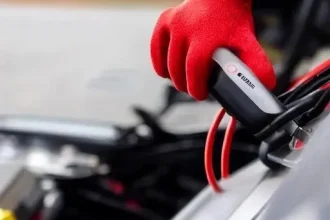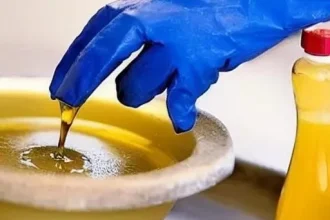There’s perhaps no household nuisance quite as universally frustrating as a clogged kitchen sink. That dreaded pool of stagnant, murky water not only halts daily routines but also triggers an immediate cascade of anxiety: “How much will this cost?” “Do I need a plumber?” “Can I even fix this myself?” For many homeowners, the prospect of a professional intervention conjures images of exorbitant fees, leaving them dreading the repair bill even more than the blockage itself. Yet, understanding the nuances of unclog kitchen sink cost can transform this common headache into a manageable, even empowering, home maintenance victory.
Far from being an insurmountable financial burden, resolving a clogged kitchen sink is often a surprisingly straightforward endeavor, particularly when armed with the right knowledge and a proactive mindset. The spectrum of solutions ranges dramatically, from simple, budget-friendly DIY tricks costing mere dollars to professional services that, while pricier, offer specialized expertise for stubborn blockages. By integrating insights from industry experts and practical, tried-and-true methods, homeowners can navigate this challenge with confidence, ensuring their kitchen remains the heart of the home, not a source of plumbing despair. The key lies in discerning when to roll up your sleeves and when to call in the cavalry, making informed decisions that save both time and money.
| Aspect | DIY Solutions | Professional Services | Prevention Strategies |
|---|---|---|---|
| Average Cost Range | $5 ー $50 (for tools like plungers, basic snakes, chemical cleaners) | $75 ー $600+ (depending on severity, method, location, and urgency) | Minimal (cost of strainers, hot water, occasional eco-cleaners) |
| Pros | Low cost, immediate action, sense of accomplishment, educational | Expert diagnosis, effective for severe/deep clogs, specialized equipment (e.g., electric snakes, hydro-jetting), often comes with warranty | Avoids future clogs, significant long-term savings, maintains plumbing health, environmentally friendly |
| Cons | Limited effectiveness for complex clogs, potential for pipe damage if done incorrectly, messier | Higher upfront cost, requires scheduling, may incur additional charges for emergency services or complex issues | Requires consistent effort and vigilance, does not resolve existing severe clogs |
| Key Methods | Plunger, P-trap cleaning, baking soda & vinegar, hand snake | Auger/electric snake, hydro-jetting, video inspection, pipe repair/replacement | Drain strainers, hot water flush (1-2x/week), proper disposal of grease/food scraps, regular maintenance |
| Reference Link | The Spruce: Unclogging a Kitchen Sink |
Empowering DIY: Your First Line of Defense
Before contemplating a professional visit, many clogs can be vanquished with a bit of elbow grease and common household items. The initial frustration often blinds us to simple fixes. As one seasoned DIYer insightfully remarked, “That’s ridiculous, and the reason why I don’t sign estimate authorizations. It’s surprisingly easy to DIY unclogging your kitchen sink most of the time.” This sentiment perfectly encapsulates the optimistic spirit of proactive home maintenance. A basic plunger, for instance, can often dislodge superficial blockages with remarkable effectiveness. For slightly more stubborn issues, the P-trap—that curved section of pipe directly beneath your sink—is often the culprit. Simply placing a bucket underneath, unscrewing the pipe, and manually removing the accumulated gunk is a surprisingly easy and free solution, saving you the average $75 to $450 a professional might charge for a simple clog.
Venturing beyond the P-trap, a drain snake or auger can be an incredibly effective tool for reaching deeper clogs. Manual hand snakes are inexpensive, costing as little as $5-$20, and provide significant leverage against blockages further down the line. For those seeking even greater power, a sink drain snake that attaches to your drill can be a game-changer, providing professional-grade force at a fraction of the cost. These tools, readily available at any home improvement store, empower homeowners to tackle issues that once seemed exclusively within a plumber’s domain. The satisfaction of successfully clearing a drain yourself, coupled with the substantial savings, makes these DIY approaches incredibly appealing and forward-looking.
When to Call the Pros: Navigating Professional Costs
Despite the efficacy of DIY methods, there comes a point when a professional plumber becomes not just a convenience, but a necessity. Deep, persistent clogs, often located far down the main drain line or indicative of a more systemic plumbing issue, demand specialized expertise and equipment. The national average cost for a plumber to fix a clogged kitchen sink typically ranges from $150 to $350, with most people paying around $300 for an electric snake service. However, this figure can fluctuate widely, climbing to $600 or even $1,300 for severe, complex blockages requiring hydro-jetting or extensive diagnostics.
Factors influencing the final plumber cost include the severity and location of the clog, the method required (e.g., basic snaking versus high-pressure water jetting), regional labor rates (plumbers in some areas can charge $300/hour), and whether the service is an emergency call. “The cost to clear blocked sink varies, but you can generally expect to pay between $75 and $450 for a professional plumber to unclog a kitchen sink,” explains one industry guide, highlighting the broad spectrum. For instance, unclogging a sink with a garbage disposal might first involve checking the unit itself, adding an initial diagnostic step. While the thought of a significant expense can be daunting, investing in professional help for intractable problems can prevent more catastrophic and costly plumbing failures down the line, ensuring peace of mind and the long-term health of your home’s infrastructure.
The Proactive Path: Prevention is Priceless
Ultimately, the most effective strategy for managing unclog kitchen sink cost is prevention. An ounce of prevention is truly worth a pound of cure, or in this case, hundreds of dollars in plumber fees; Simple habits can dramatically reduce the likelihood of clogs, transforming potential plumbing nightmares into distant worries. Regularly flushing your sink with hot water, at least once or twice a week, helps to clear out minor debris and grease before it can accumulate into a formidable blockage. Think of it as a mini-detox for your pipes, maintaining their pristine flow.
Furthermore, installing drain strainers and conscientiously disposing of food scraps and grease in the trash, rather than down the drain, are incredibly simple yet profoundly impactful measures. These small, consistent efforts act as an invisible shield, protecting your plumbing from the insidious buildup of fats, oils, and greases (FOG) that are the primary culprits behind kitchen sink clogs. By embracing these preventive steps, homeowners aren’t just saving money; they are investing in the longevity and efficiency of their entire plumbing system, fostering a forward-looking approach to home maintenance that empowers them to avoid the dreaded clogged sink scenario altogether. The future of a free-flowing kitchen begins today, with mindful habits and a commitment to proactive care.






